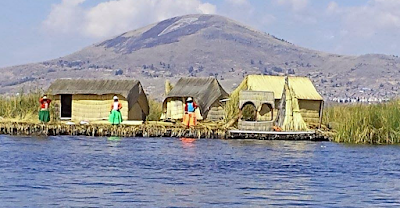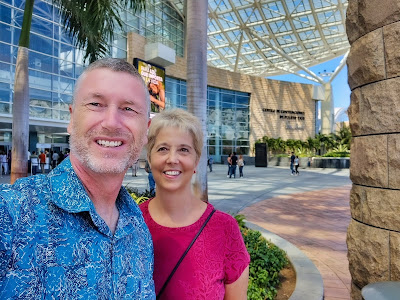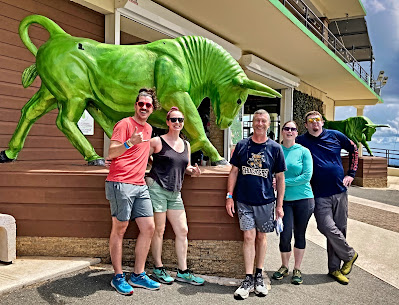A Cultural Homestay Experience
One of the most interesting, exciting, and memorable trips I have taken was with my grown daughters. In 2015, we embarked on a two-week trip to Peru. For all of us, that was our first time traveling anywhere in South America.
There are certainly many aspects of the trip that I could talk about. But one of the most remarkable and unique parts of this adventure for us was a cultural homestay visit on the island of Amantaní on Lake Titicaca.
When we left the main city of Puno there were tanks were poised with guns out in the town square. We arrived at the lake and headed out in a medium-sized motor boat with six or seven other travelers the US and Europe.
First stop: the fascinating Floating Islands of Uros.
The boats they use, their homes, the items they sell, and even the islands themselves are made from the totora plant. In addition to stopping there to stimulate their local economy, it was very interesting to see and learn about this distinctive set of islands.
The Islands of Uros are actually human made in origin from the totora plants. Each island has about a 30 year lifespan. They are anchored with ropes of totora and staked to the bottom of the lake with eucalyptus stakes. New layers are added to the islands weekly to monthly, depending on the season.
When we arrived at our destination of Amantaní Island, our tour guide stayed with us for a brief time in the afternoon and shared with us the daily activities of Amantaní people. The inhabitants of the island are primarily farmers and artisans. We watched the artisans working and toured some rugged farmland. The most prevalent crop on Amantaní was potatoes. In fact, they told us they grew over one hundred varieties of potatoes.
The last stop with the tour guide was the local school library. While very small in size compared to what we were used to seeing back home, they were very proud that they had a library and were focusing on literacy for the children of Amantaní.
The several thousand inhabitants of Amantaní are of Quechua origin. As we quickly found, our basic Spanish was of very little help. The family that we stayed with had a middle school aged daughter that was our interpreter—that is, she interpreted the Quechua of her mother to Spanish for us!
We are slightly on the tall side in the US, but not by much; however, compared to the family we were staying with, we were giants! Our accommodations were very basic. The mattresses were made of sacks and stuffed with straw, similar to what was used in prairie homes in the US in the late 1800s.
One other difference for us were the bathroom facilities in the home. I’m quite confident that I would not have been able to figure out how to “go” had we not all been to rural Mexico and experienced similar facilities.
There was a VERY LOW toilet bowl to sit on or squat over. There were also single ply paper wipes. There were no directions. Next to the toilet there was a large scoop and a bucket of water. You dipped the scoop in the water bucket and strongly tossed the water in the toilet bowl, hoping to flush down the biodegradable waste. Then you placed the paper waste in another can near the commode.
It didn’t take long for us to figure out that we needed to be good stewards of their scarce resources.
A Wonderful Highlight
One of the highlights of the homestay experience was being invited to participate in the community music and dancing event in the evening. While we were not required to attend, the experience gave us another look into the daily lives of our hosts. Singing, playing, and dancing were on the agenda that evening. They were gracious enough to share with us their local costumes for the experience. Those of you who know me, might be surprised that I participated, but I didn’t want to seem rude or to miss out on the experience!
We know we are blessed in having been able to have this experience and our lives are richer for it. The cultural exchange experience in Amantaní was very touching and fascinating, thanks to the people!











Julia, que maravillosa experiencia!!! Yo no conozco Los Uros!!! You would be my tour guide when/if I go!!! - Just to mention the International Potato Center (CIP) is located in Lima: "There are over 4,000 edible varieties of potato, mostly found in the Andes of South America. Potato is the third most important food crop in the world after rice and wheat in terms of human consumption. More than a billion people worldwide eat potato, and global total crop production exceeds 300 million metric tons. Potato is a critical crop in terms of food security in the face of population growth and increased hunger rates. For example, China, the world’s biggest consumer of potatoes, expects that fully 50% of the increased food production it will need to meet demand in the next 20 years will come from potatoes." - Very interesting that many people think potato is Irish. One day, there was an activity for St Patrick day in my work and we had to decorate/paint a potato picture ...well mine was the only one that was not Irish like, all green...do you wonder, why?
ReplyDeleteRommy thank you for the added information about the importance of the potato in feeding the world. I knew it was VERY important for those on the island that we visited!
Delete